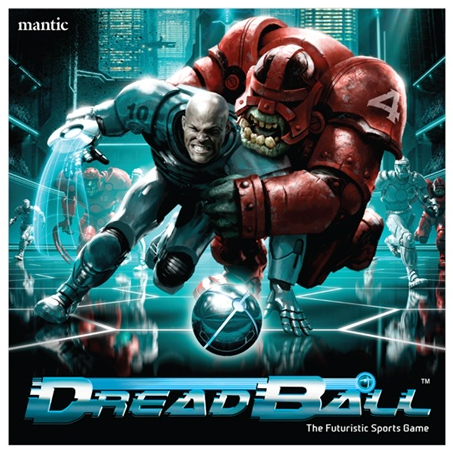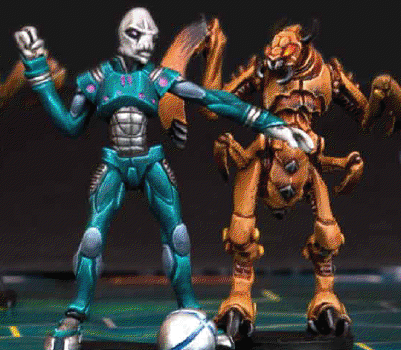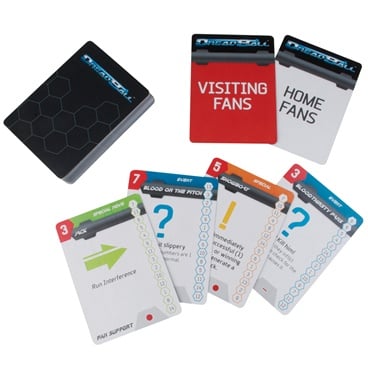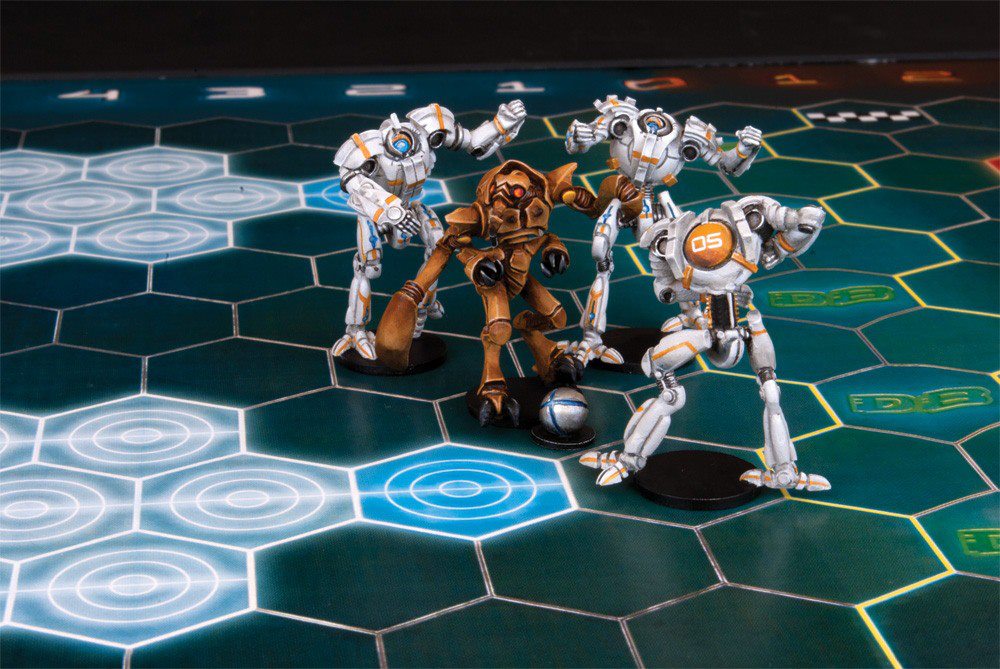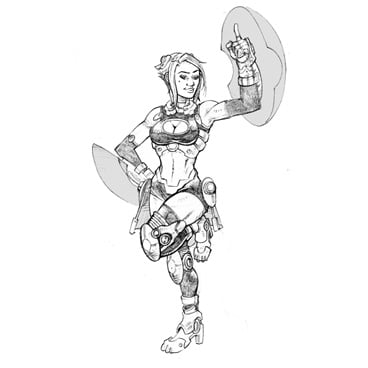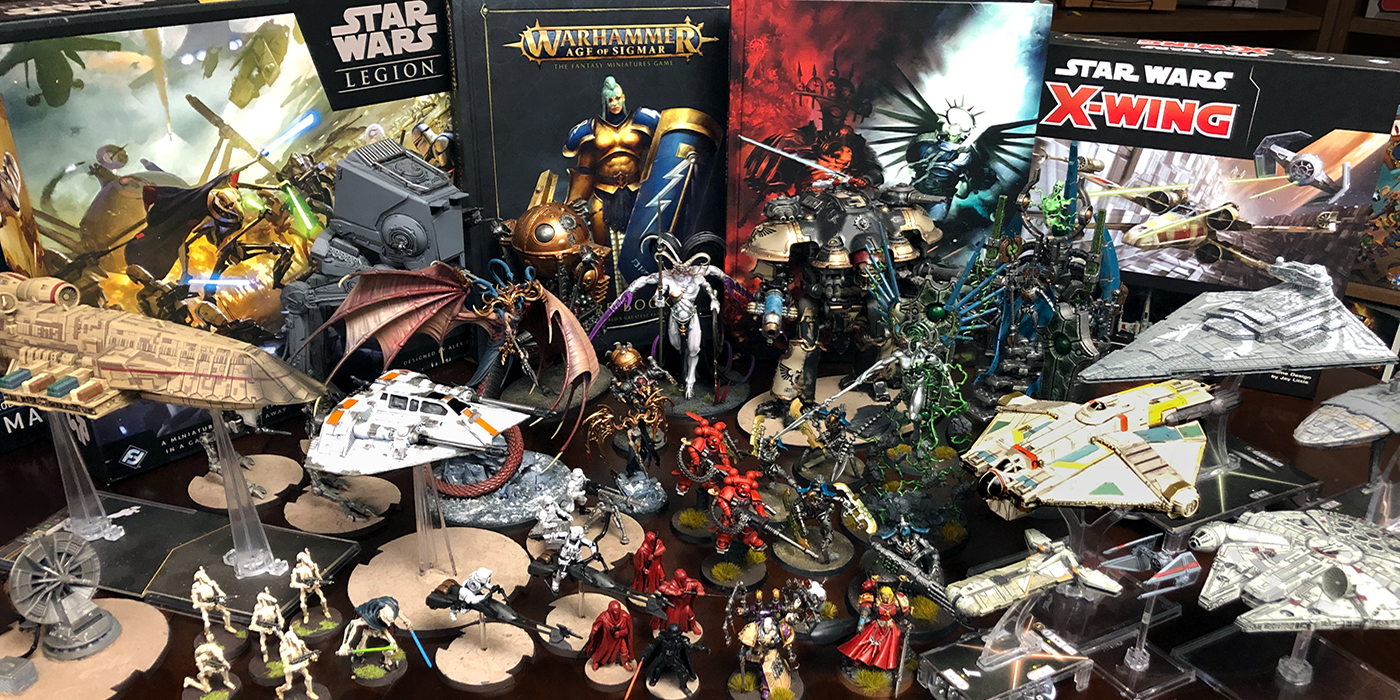Dreadball Part 2 – League Play
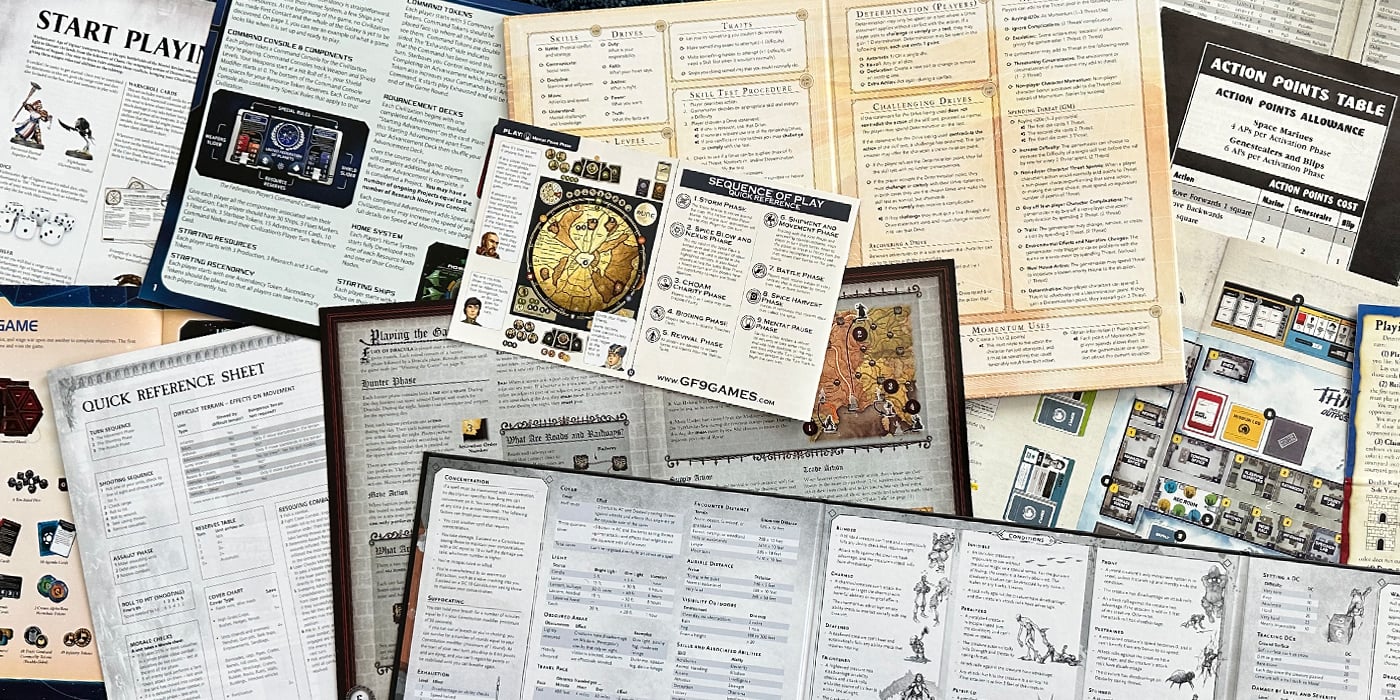
Last time we covered the basics of the game. This time I intend to discuss some of the finer aspects of gamplay, some of the rules I didn’t cover last time, the mechanics I left out and then finally the concepts of league play and the All Star MVPs.
This is the perfect time to discuss Dreadball as Mantic have just released Season 2 of Dreadball! Featuring new MVPs and 4 new teams, as well as rules for coaches, cheerleaders and improved skill improvement tables it improves the game massively
The 4 new teams are a female Corporation Team, the Z’Zor (a insectoid race), the Judwan (a race of pacifists who are all strikers) and the Robots (a team of all Jacks, but every player can spend an action to transform into any other role at will). Bringing the game up to 8 teams, and with more planned for season 3 in the future there is a lot more options available for people who want to start up.
There are two big mechanics that I left out of the last write up. These are the threat hexes and the cards (fan check/event system). These are both big parts of the overall game, even on a one off “exhibition” level.
The first of these is threat hexes. Similarly to Bloodbowl each player projects a 3 hex area in front of them that is their “threat area”. If these overlap with other its can make normal tests for your opponent harder by giving them less dice (For instance – If your player slams an opponent who is already in the threat hex of another of your players, he has one less dice to dodge/slam back. This makes it more likely you will score more sucesses than him).
The other effect of threat hexes is they control movement. If you want to move out of a threat hex you need to make a Speed Check or fall over. This is a great way to slow an opponent if you don’t want to (or can’t) slam them out the way. In Season 2 a new skill that you can gain is 360 Vision, which extends your threat hexes to all 6 around your character, not just the 3 in front of them.
The Second aspect is that of the card system. This works tied in with the coaching dice I mentioned last time. There are 3 main types of cards – Events, Specials and Actions.
Each Team Starts the game with a set number of cards and coaching dice. Forge Fathers start with one of each, Veermyn with no dice and one card and the new Female Human Team start with 4 dice, but no cards. During the game you can choose to spend an action to pick up a card.
You can play the cards at different times depending on whats on them;
– Actions. These are “free” moves that do not use one of your 5 actions and can be played on a player that is of the same class as is on the card. These can be done at any point. For instance you may get a “Sprint” card. This allows a player to make a sprint move, even if they’ve already used both their actions this turn.
– Events. Random events to shake up the game. These can range from all tests for dodging getting an additional dice, to the ball exploding randomly and a new ball being ejected (this one is especially funny to play just before your opponent scores :P)
– Specials. These are cards you play when your normal action matches the description on the card, and improve that action. These largely result in Fan Checks.
One off exhibition matches are but one part of the game. The game gets a lot better when you get a few teams together and organize a league.
League Play
Get a few buddies together and organise a league. What could be better? Not only do you get to play a bunch more games with a bunch of people, but you unlock the greater potential of the game
After a league game you earn 2 things – Money and Experience. Money speaks for itself, teams get paid for their performance, win and get more. Players earn experience for individual moments, such as scoring a high point goal, or knocking out a player for 3 turns (or killing them!).
Money can be spent in league on a few things. You can buy more players so you have more players in your roster. You can pay to bring a favoured player back from the dead after the game (although you get money for selling his corpse too). You could buy more coaching dice to begin the game with. And now under Season 2 rules you could buy cheerleaders or coaching staff for your team. It also allows you to bid on the MVP players.
MVP players are the all stars of Dreadball. Names like Gorim Ironstone, Buzzcut and Number 88 are famous across the Dreadball courts of the future. And with good reason! MVP’s are the best players available. They can be bid in an auction before each round between you and your players. Some players won’t play for some teams, but you can still bid on them just to deny them to your enemies!
MVP’s typically fill a hole in your team. Gorim Ironstone, my FF MVP, is a striker, somewhere the FF suffer. He is also faster than every other FF in the game, making it easier to get down the pitch and score. Buzzcut is a mountain of an Ork that can dish out tremendous punishment, in case your team can’t.
Experience points are earned for doing awesome stuff on the pitch. At the end of the game, for each EXP point earned the player can roll on a series of tables for new abilities. These may be extra abilities, or they may improve his stat values. For instance a Guard can kill an opposing player, earn a point, roll on the Guard table and earn an improvement to his Strength. This is a big boon as it allows him to hurt more people! No stat can be improved above 3+ though. Only certain MVP’s have a 2+ stat.
As leagues go on, reputations with players grow, players are killed in the line of “battle” and you might find you aren’t ready to let your pro striker get squished into the ground. Here you can pay to resurrect them, so as not to lose their skill advances. Its not cheap though….the cost is typically around your complete earnings for the last 2 games. So you have to weigh the decision up!
League Play is Dreadball at its best. It allows sagas of epic players and rivalries to be built up. It allows teams to grow and use all the rules in the book. It allows the MVP’s, incredibly powerful characters, to be played in games. All in all its a great idea if you’ve got the players!
Season 2 of Dreadball goes on Sale for non Kickstarters on the 25th April 2013

